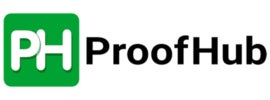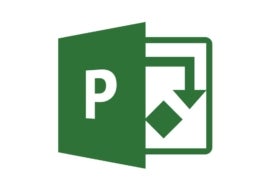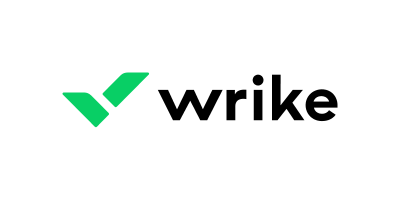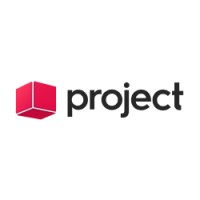Looking for an alternative to Trello? Our comprehensive list covers the best trello alternatives, their key features, pricing, pros, cons and more.
Trello is a pioneer of project management solutions that uses a kanban-style user interface. Since its launch in 2011, Trello has continued to evolve and revamp its card system layout by adding new features like timelines, dashboards and tables.
In the same time frame, several other project management solutions have emerged as alternatives to Trello. If Trello is not an ideal fit for your company, you should consider using one of these alternative software options. We have highlighted the 10 top Trello alternatives on this page for your consideration.
Jump to:
Top Trello competitors and alternatives: Comparison table
Here is a quick view of how the top Trello alternatives compare in terms of core features:
| Kanban boards | Gantt charts | Workflow automation | Native time tracking | Built-in messaging | Starting price | |
|---|---|---|---|---|---|---|
| Trello | Yes | Yes | Yes | No | No | $5 per person per month |
| ClickUp | Yes | Yes | Yes | Yes | Yes | $5 per person per month |
| Asana | Yes | Yes | Yes | Yes | Yes | $10.99 per person per month |
| Hive | Yes | Yes | Yes | Yes | Yes | $12 per person per month |
| Wrike | Yes | Yes | Yes | Yes | Yes | $9.80 per person per month |
| Taskade | Yes | No | Yes | No | Yes | $4 per person per month |
| Airtable | Yes | Yes | Yes | No | No | $10 per person per month |
| ProofHub | Yes | Yes | Yes | Yes | Yes | $45 flat rate per month |
| Jira | Yes | Yes | Yes | No | Yes | $7.75 per person per month |
| Microsoft Project | Yes | Yes | Yes | Yes | No | $10 per person per month |
| Monday | Yes | Yes | Yes | Yes | Yes | $8 per person per month |
ClickUp: Best for Agile project management

ClickUp is a powerful project management tool that most closely resembles the Asana project management tool format. ClickUp’s dashboards are slightly more graph-like than Asana’s but less so than Trello’s.
In terms of features, ClickUp offers more functionality than Trello. For instance, ClickUp can do kanban boards just as easily as Trello, but with added features like embedded email and the ability to easily customize the dashboard or switch between views.
Kanban boards, workflow automation and timeline views are available in both software. ClickUp offers Gantt charts and native messaging, which are not available in Trello without a Power-Up.
Features
- Reporting and analytics: Clickup is well known for its outstanding reporting tools. You can customize the reports for project progress, budgets, team performance and other parameters.
- Project view: With ClickUp, you can switch between multiple views, including mind maps, boards, Gantt charts, calendars and list views.
- Agile tools: ClickUp’s Agile features are its unique selling point. Agile features include an Agile-optimized dashboard and sprint widgets.
Pros
- Highly customizable workflows.
- Extensive Agile support.
- Powerful automation engine.
Cons
- Occasional slow loading or lag when moving pages.
- UI that feels unintuitive.
Pricing
- Free: No cost for unlimited Free plan members.
- Unlimited: $5 per person per month, billed annually, or $9 per person billed monthly.
- Business: $12 per person per month, billed annually, or $19 per person billed monthly.
- Business Plus: $19 per person per month, billed annually, or $29 per person billed monthly.
- Enterprise: Contact ClickUp’s sales team for pricing information.
For more information, read the full ClickUp review.
Asana: Best for scalability

As a Trello alternative, Asana might just be one of the closest comparisons but with more flexibility — so much so that Asana has a built-in tool to import your Trello boards with one click. Asana breaks away from the strict board views of Trello and instead focuses on projects. Projects can be displayed in multiple views, including kanban.
Asana focuses more on collaboration than Trello by offering tools to facilitate communication and sharing between teams and departments. This can be helpful for creative teams and any other teams that need to share information quickly and repeatedly during projects.
Both Asana and Trello have some similar features, as both software offer kanban boards, timeline views and workflow automation. Trello does not natively offer Gantt charts or messaging features without a Power-Up.
Features
- Extensive list of integrations: Asana integrates with many top business software solutions, including Salesforce, Zapier, Slack and Tableau.
- Smart layout: The interface is intuitive and logical, allowing for smooth navigation.
- Import existing project data: Users can import existing project data into the application and start working from where they left off.
Pros
- Extensive import options.
- Ease of scaling.
- Team-specific workflows.
- Extensive list of third-party integrations.
Cons
- Can have a steep learning curve for advanced tools.
- Can feel overly complex for simple tasks.
Pricing
- Basic: No cost for unlimited tasks, projects, messages, activity logs and file storage.
- Premium: $10.99 per user per month, billed annually, or $13.49 per user billed monthly.
- Business: $24.99 per user per month, billed annually, or $30.49 per user billed monthly.
- Enterprise: Contact Asana’s sales team for pricing information.
For more information, read the full Asana review.
Hive: Best for analytics

Hive is a great alternative for larger teams that have outgrown Trello. In particular, Hive’s analytics tools allow project managers to quickly visualize project and performance data to identify any issues that need attention. In addition, Hive offers stronger communications features than Trello’s @mention system. Hive includes real-time notifications and a built-in instant messaging system.
Features
- Built-in messaging system: Hive’s messaging tools connect with the platform’s dashboard for a seamless team collaboration experience.
- Project management layout options: You get several visualization options, such as portfolio view, table view, kanban board view and calendar view.
- Project summaries: The summary view allows users to visualize progress across all tasks or projects.
- Quick proofing and approval tools: Rather than sending emails with attachments for approval, teams can simply tag their managers in Hive for approval.
Pros
- Powerful reporting and analytics tools.
- Modern and visually appealing UI.
- Clean and organized interface.
Cons
- Extra costs for advanced tools, which are available through add-ons.
- Limited user permissions.
- Significantly less functionality in the mobile app.
Pricing
- Free: $0 for up to 10 users.
- Teams: $12 per user per month, billed annually, or $18 per user billed monthly.
- Enterprise: Contact Hive’s sales team for pricing information.
For more information, read the full Hive review.
Wrike: Best for team collaboration

Wrike is a great alternative for users who want to take a big leap in features, even beyond what Asana and many other project management tools offer over Trello. Wrike’s feature set includes many built-in integrations, making most third-party tools unnecessary; its suite of features goes beyond comparable tools like Asana or ClickUp. Wrike also offers users standard project management views, including kanban and timeline.
Features
- Wrike Lock: Wrike workspace data is protected with additional layers of encryption through the Wrike Lock feature.
- Wrike analytics: Wrike offers plenty of useful marketing insights, such as performance metrics from marketing campaigns and reporting features.
- AI tools: With Wrike, you get AI tools to help with project management. This includes an AI project risk predictor to help highlight any upcoming issues with project progress.
Pros
- Enterprise-level security features.
- Organized and intuitive user interface.
- Extensive interoperability and workflow capabilities.
- Plenty of in-app learning content.
Cons
- Several key tools are only available through add-ons.
- Wrike is expensive compared to other competitors.
Pricing
- Free: $0 for unlimited users.
- Team: $9.80 per user per month, billed annually. Monthly billing is not available.
- Business: $24.80 per user per month, billed annually. Monthly billing is not available.
- Enterprise: Contact Wrike’s sales team for pricing information.
- Pinnacle: Contact Wrike’s sales team for pricing information.
For more information, read the full Wrike review.
Taskade: Best for real-time team collaboration

Taskade is an easy-to-use project management solution known for its excellent team collaboration and list-based task management capabilities. While Trello is also simple to use, Taskade offers a more minimalist interface. However, if you like using kanban boards, you will enjoy using Trello more than Taskade. Trello is also better at visualizing tasks or project progress.
Features
- Built-in messaging system: Taskade allows users to have one-on-one or group chats. It also offers video chat capabilities.
- Nested task lists: Users can use this feature to break down large or complete projects into more manageable subtasks.
- Mind map view: With this feature, users can visually organize and connect ideas and tasks.
- Customizable templates: Taskade offers a variety of prebuilt and customizable templates for different use cases.
Pros
- Comprehensive knowledge base.
- Excellent team collaboration tools.
- Multiple pricing plans to suit different size teams.
Cons
- Occasional slow loading.
- No Gantt charts or time tracking.
Pricing
- Free: $0 for up to 3 users.
- Starter: $4 per user per month, billed annually, or $8 per user billed monthly.
- Plus: $8 per user per month, billed annually, or $16 per user billed monthly.
- Pro: $19 per user per month, billed annually, or $39 per user billed monthly.
- Business: $49 per user per month, billed annually, or $99 per user billed monthly.
- Ultimate: $99 per user per month, billed annually, or $199 per user billed monthly.
- Enterprise: Customized.
For more information, read the full Taskade review.
Airtable: Best for customization

Airtable is a unique project management tool that’s based on a spreadsheet and database model. Think of it as Excel or Google Sheets supercharged specifically for project management. Airtable is perfect for teams with data-intensive workflows. By incorporating the tools of a spreadsheet and database, Airtable helps organize projects that involve large data sets or asset management.
This Trello alternative is also a great fit for teams that prefer to use spreadsheets as their main way of visualizing and entering data. However, users are not locked into a spreadsheet view with Airtable; they can quickly swap between kanban, calendar and other popular views.
Both software offer kanban boards, workflow automation and timeline views. Airtable offers a few extra features compared to Trello. This includes Gantt charts and native messaging capabilities.
Features
- Multiple views: You get a variety of views with Airtable, including grid, form, gallery, calendar, kanban and more.
- App marketplace: With Airtable, you can access an extensive app marketplace that helps extend the software’s functionality.
- Spreadsheet interface: The spreadsheet-based interface means it has a familiar collaboration layout for users who have used MS Excel.
Pros
- Visually appealing user interface.
- Highly customizable.
- Works great with large databases and spreadsheets.
Cons
- Limited reporting and analytics are offered.
- Gantt charts are only available in higher-priced plans.
Pricing
- Free: $0 for unlimited bases for up to five users and unlimited commenter and read-only users.
- Plus: $10 per user per month, billed annually, or $12 per user billed monthly.
- Pro: $20 per user per month, billed annually, or $24 per user billed monthly.
- Enterprise: Contact Airtable’s sales team for pricing information.
For more information, read the full Airtable review.
ProofHub: Best for simple project management

ProofHub builds on some of the core features of Trello without adding undue complexity; this includes ProofHub’s powerful proofing and project management tracking tools that are easily accessible.
Some advanced tools offered by ProofHub include custom reporting and workflows — which are strong communication features — and project-tracking tools that work particularly well for project managers. ProofHub is a great alternative to Trello for teams that need more advanced features than what Trello offers but still want a highly accessible tool.
Features
- Reports: Users can create different types of custom reports in ProofHub using their chosen parameters.
- Task management: ProofHub makes it quick and easy to create, delegate and monitor tasks. You can also add labels, set time estimates and add due dates for each task.
- Table view of tasks: This is a standout feature of ProofHub. You can choose which task fields to add to the table view by filtering through different parameters; you can also use this feature to export data to a CSV file.
Pros
- Highly customizable software.
- Excellent task management tools.
- Detailed project reports.
Cons
- Limited integrations.
- Maximum storage is limited to 100 GB.
Pricing
- No free plan.
- Essential: $45 per month, billed annually, or $50 billed monthly.
- Ultimate Control: For the first three months, ProofHub is $89 per month, billed annually, or $99 billed monthly. After, pricing increases to $150 per month.
For more information, read the full ProofHub review.
Jira: Best for iterative projects

While both Jira and Trello are top project management solutions, they have different strengths. Jira is an excellent tool for teams that need issue-tracking tools or extensive support for agile methodology. Trello is better for general-use project management; however, if you need a more powerful solution that offers a high level of customization and advanced tools, then Jira would be the better solution.
Features
- Multiple project view: Visualize project data through the list, board, timeline and calendar views.
- Data import options: Import existing work to create project issues and collect data through forms.
- Project summary: Access a Summary page embedded with key performance indicators for progress, priorities and workloads.
- Deep integration with Atlassian projects: Integrate with Jira Software and other Atlassian tools.
- Variety of templates: Start from 20 prebuilt templates for finance, marketing, human resources and legal teams.
Pros
- Highly customizable.
- Outstanding issues tracking tools.
- More than 500 integrations and 3,000 extensions for workflow apps.
Cons
- Complex for new users.
- Customization can be time-consuming and requires technical expertise.
Pricing
- Free: $0 for up to 10 users.
- Standard: $7.75 per user per month, billed monthly, or $790 annually for up to 10 users.
- Premium: $15.25 per user per month, billed monthly, or $1,525 annually for up to 10 users.
- Enterprise: Available for teams with more than 800 users and only billed annually. Contact Jira sales for pricing information.
For more information, read the full Jira review.
Microsoft Project: Best for existing users of Microsoft products

Microsoft Project and Trello are both capable project management solutions, but they cater to different needs. MS Project is a powerful and comprehensive solution that offers a full range of features; however, it has a steep learning curve. MS Project is ideally suited for large-scale projects or for teams that are already using Microsoft products.
Features
- Variety of dashboard views: You can choose to view projects or tasks in the timeline, board, grid or chart view.
- Seamless integration with Microsoft products: It is quick and easy to integrate MS Project with other Microsoft applications.
- Prebuilt reports: MS Project comes with a variety of pre-built reporting templates.
Pros
- Deep integration with other Microsoft products.
- Centralized platform for all Microsoft apps.
- Customizable and detailed reporting.
Cons
- Steep learning curve.
- Limited team collaboration tools.
- Light on integration outside the Microsoft ecosystem.
Pricing
Microsoft Project can be used as a standalone product or added to your Office 365 subscription.
- Cloud-Based plans: Starts at $10 per user per month, billed monthly.
- On-Premises plans: Starts at $719.99 flat fee.
For more information, read the full Microsoft Project review.
Monday: Best for teams of all technical levels

Monday work management offers a more comprehensive project management platform compared to Trello. While Trello is simpler to use, it is not ideal for complex projects. Monday work management offers the advanced tools required to manage a project portfolio or complex projects. You also get more customization options with monday work management.
Features
- Visually appealing and customizable interface: Personalize colorful interfaces that bring project data to life.
- Custom forms: Customize and share surveys for data collection via the WorkForms tool.
- Variety of integrations: Access integrations for developers, marketing, CRM and project management.
- Project visualization tools: Visualize project data through multiple tables, kanban boards and dashboard views.
- Automation engine: Utilize pre-built automations and a long list of options for creating automation rules.
Pros
- Clean and organized user interface with smooth navigation.
- Design which allows a multitude of use cases across industries and functions.
- Highly customizable software.
- Powerful automation tools.
Cons
- Advanced features have a steep learning curve.
- Occasional issues with reconciliation of data after import.
- Default notification settings can be overwhelming.
Pricing
- Individual: $0 for up to two seats.
- Basic: $8 per seat per month, billed annually, or $10 per seat billed monthly. A free trial is available.
- Standard: $10 per seat per month, billed annually, or $12 per seat billed monthly. A free trial is available.
- Pro: $16 per seat per month, billed annually, or $20 per seat billed monthly. A free trial is available.
- Enterprise: Quotes are available upon request.
For more information, read the full monday work management review.
Is Trello worth it?
Trello is worth it if you value simplicity and ease of use. It’s also great for individuals or teams looking for a generous free plan with unlimited users and plenty of features. The project management tool doesn’t quite have the scalability offered by other competitors, so you might outgrow the software. Trello is ideally suited for small businesses, freelancers and solopreneurs looking for a simple project management solution for collaboration, project tracking and task management.
Trello pros and cons
While Trello has established itself as one of the best project management solutions for basic project management, it has some drawbacks. Here are Trello’s top pros and cons.
| Pros | Cons |
|---|---|
| Ease of use. | Reliant on kanban boards. |
| Generous free plan. | Not designed to handle complex projects. |
| Highly visual interface. | Missing advanced project management tools. |
Trello pricing
Trello offers a free version that allows unlimited items across 10 boards in a single workspace, and unlimited file storage with a maximum of 10MB per file.
Increasing to the $5 per user per month plan (billed annually) adds advanced checklist options, custom fields, unlimited storage with 250MB per file, 1,000 workspace command runs per month, single board guests and saved searches.
Increasing to the $10 per user per month plan (billed annually) adds a dashboard view, timeline view, table view, calendar view, map view, unlimited workspace command runs per month, admin and security features, priority support, Google apps sign-on and simple data export.
Finally, Trello also offers an enterprise offering for $17.50 per user per month (billed annually) that adds unlimited workspaces, organization-level permissions, multi-board guests and free single sign-on and user account provisioning support.
Do you need an alternative to Trello?
Trello’s main strength is its simplicity and easy learning curve; teams and individuals can quickly add new boards and cards without menu-diving or other navigation hassles. However, some users and teams may outgrow Trello and need features that can handle more complex projects and workflows. If you need features such as native time tracking and Gantt charts, you may need to consider using a Trello alternative.
Methodology
To compile this list of top Trello alternatives, we analyzed what Trello is lacking and how this gap can be met with other applications. Our analysis included an evaluation of several aspects of the software, including its usability, scalability, standout features, strengths and weaknesses. Customer ratings and testimonials were also considered in our analysis of each software.
Featured Partners
1 Wrike
Wrike is the ultimate solution for managing projects.
Discover the power of Wrike’s award-winning project management software. Maximize productivity using Gantt charts, Kanban boards, and calendars. Streamline resource allocation, drive team alignment, and enhance forecasting. Benefit from AI-driven automation to save time on admin. Deliver impressive results, hit deadlines, and stay within budgets while elevating your team’s performance.
2 monday.com
monday.com Work OS is the project management software that helps you and your team plan, execute, and track projects and workflows in one collaborative space. Manage everything from simple to complex projects more efficiently with the help of visual boards, 200+ ready-made templates, clever no-code automations, and easy integrations. In addition, custom dashboards simplify reporting, so you can evaluate your progress and make data-driven decisions.
3 Rocketlane
Rocketlane is purpose-built to run customer facing projects. It uniquely ties project management, document collaboration, and communication to help teams hit their project goals, accelerate time-to-value, and elevate the customer experience.
4 Cerri Project
Cerri Project is a comprehensive PPM solution integrating project portfolio management and strategic planning features to drive value for your business.
Strategic execution of project portfolios, business initiatives and objectives.
Global capacity planning and visibility.
Streamlined workflows with process-driven project management.
5 Jira
Simple and powerful way to track and manage issues. It handles all kinds of issues (bugs, features, enhancements, and tasks) and can be used for bug tracking, development help, project management, or group task cataloging.
Source of Article








